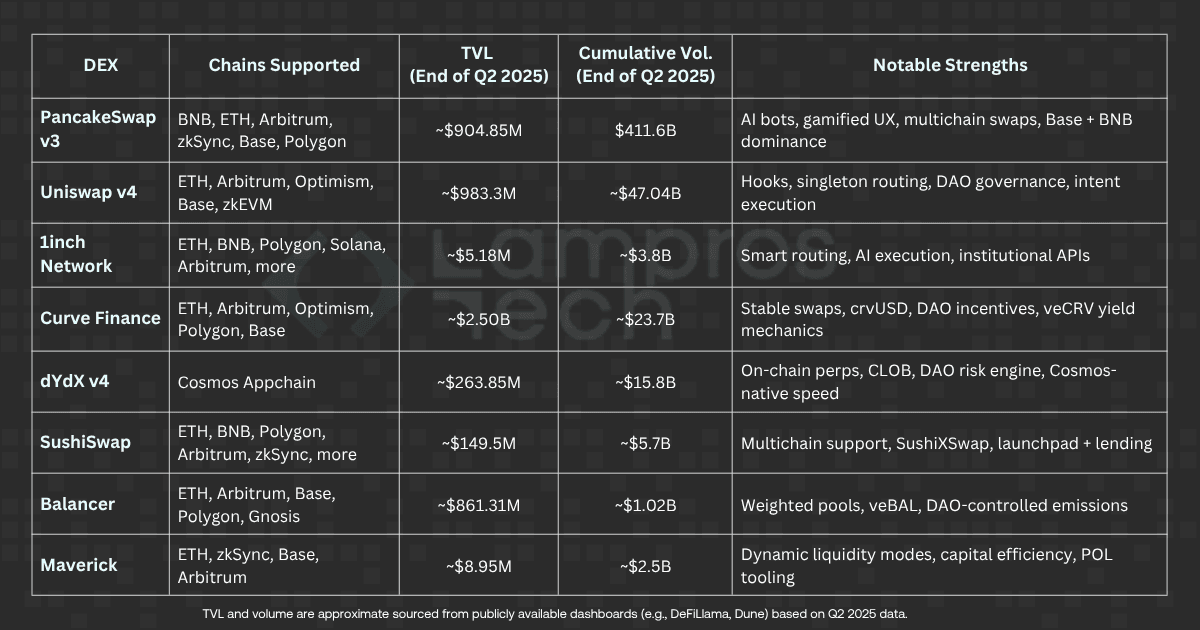Contact Us
If you're working on something real — let's talk.
Development & Integration
Blockchain Infrastructure & Tools
Ecosystem Growth & Support
© 2025 Lampros Tech. All Rights Reserved.
Published On Aug 02, 2025
Updated On Aug 02, 2025



Growth Lead
FAQs

The best DEX depends on your needs. Uniswap v4 leads in flexibility, while dYdX excels in derivatives and Jupiter dominates Solana routing.

Evaluate DEXs by infrastructure fit, liquidity depth, execution quality, security, and regulatory features.

Platforms like 1inch, Jupiter, and PancakeSwap offer cross-chain routing across EVM and non-EVM chains.

Yes. Most L2 DEXs like those on Arbitrum or Base offer lower gas fees and faster confirmation times.

Key features include intent-based execution, smart routing, DAO governance, and MEV protection tools.